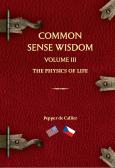The “Rosetta Stone” of Leadership 1-2
In 1799, a French Lieutenant in Napoleon’s army uncovered an ancient Egyptian artifact in the port city of Rashid (known as Rosetta today), Egypt. It was a discovery—celebrated with great enthusiasm—that would unlock the centuries-old mystery of how to decipher ancient Egyptian hieroglyphics. Since then, the Rosetta Stone has become a metaphor for any discovery that unlocks, deciphers, or explains something of great value that had been previously difficult, if not impossible, to understand.
Just such a discovery has been made by social scientists regarding leadership.
First, let me explain the leadership mystery to which I refer. Today, many thought-leaders who study leadership on a global basis, agree that businesses have, in most cases, maximized every possible benefit from operational practices such as Six Sigma, reengineering, and Total Quality Management. Jim Clifton, CEO of Gallup—a U.S.-based research firm, in a recent interview goes on to explain that the competitive advantages from these practices have increasingly reached a point of diminishing returns. In other words, most well-run companies have squeezed almost every efficiency they can from their operations. How are leaders going to adjust their strategies to compensate for this as their investors and shareholders look at them with growing anxiety about what this means for the future?
Here’s another, perhaps even more interesting, part of the mystery facing leaders in the 21st century that should send shock waves through every Board of Directors meeting room in the world, and cause CEOs in every time zone to lie awake at night.
Gallup maintains what they call an Employee Engagement Index (EEI), which registers how “engaged” employees are in their jobs. Engagement is a trendy management buzz word for describing to what degree employees are focusing on, and committing themselves to what they do day-to-day with enthusiasm, creativity, a sense of ownership and,—fill in the blank—I think you get the importance of this index.
I am told that the EEI is compiled using input from more than one million employees worldwide—a truly significant resource pool of data. I won’t bore you with all the findings, so here’s the bottom line: 80% of the workforce today is either passively or actively disengaged from their jobs. It would be impossible for me to put enough exclamation points behind that statement to stress the significance of this discovery. My good friend, Jan Mühlfeit, Microsoft’s Chairman Europe, put it another way recently. “Pepper, do you realize what this is saying? The global workforce is operating at something on the order of 20% efficiency!”
Aside from the fact that disengagement has immediate implications for the financial health of an enterprise, its toll on human illness, such as anxiety and depression, is also significant, but that’s another study.
Have I got your attention yet? As a leader, do you think this is a problem worth solving?
The field of Behavioral Economics attempts to tell us why people make decisions—decisions such as whether to buy a certain product, whether or not to vote for a candidate, and whether or not to be engaged in our jobs. The key to understanding the making of this conscious decision on the part of an employee—to be engaged—is the Holy Grail for leaders today. Another puzzling fact that behavioral economists are dealing with is that people do not make important decisions—like whether to be engaged in their jobs or not—by employing logic. These decisions are driven and triggered largely by emotions.
Speaking of bottom lines—Leaders today must either find ways to tap into employee engagement—to use their own “Rosetta Stone” to unlock this complex mystery—or they will watch their careers, along with the values of their businesses, atrophy.
So, what is this “Rosetta Stone” for 21st century leaders? Does it truly exist? Can one prove that it will have the desired effect of engaging people in their jobs? How can one “discover” it as Lieutenant Bouchard did in 1799 and, more importantly, use it?
These questions and more will be answered in my next column.




